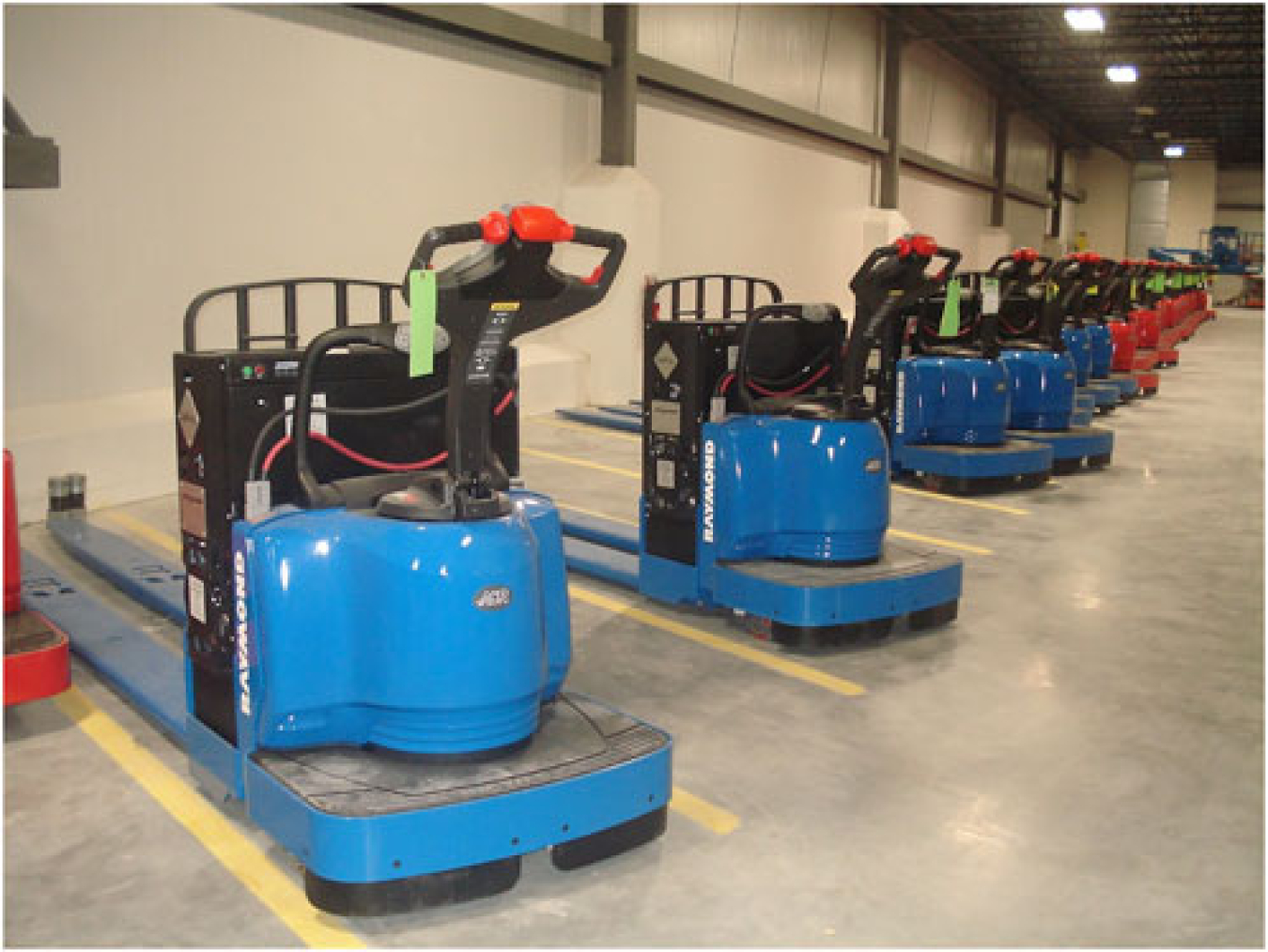We studied how four clean energy technologies got commercialized to find commonalities that could clear the path to market for other clean energy technologies. Read what we learned.
Office of Energy Efficiency & Renewable Energy
December 5, 2022There is a lot to consider when moving a clean energy technology out of the lab and into the market: how it compares against established technologies, its ability to attract venture capital, the impact of market forces, and much more. With support from the Office of Energy Efficiency and Renewable Energy (EERE), thousands of American innovators are working quickly to develop solutions that can mitigate the worst effects of climate change, but the rates of progress—and success—vary. In addition to satisfying consumer demand, successful clean energy technologies must meet economic and regulatory requirements, often while contributing to a governmental or societal objective.

Fuel-cell forklifts. Photo by Jennifer Kurtz, NREL.
EERE looked at different technology pathways to the marketplace to see whether general patterns emerged. Finding any similarities could clear the path to commercialization for more renewable-energy and energy-efficiency solutions. The goal was to identify impasses and avoid the “valley of death,” where innovative technologies fail to become successful products.
To this end, EERE and the Joint Institute for Strategic Energy Analysis studied the commercialization pathways of four technologies: an improved wind-turbine design, thin-film solar photovoltaics, dual-stage evaporators in refrigeration, and fuel cells for material-handling equipment. An article describing the four case studies was published in Frontiers in Energy Research on November 9.
The first sale to a customer marks a crucial step in a clean technology product’s journey to widespread commercialization. For one of these case studies, fuel cells, these first customers emerged in the niche material-handling market, which has created new possibilities for hydrogen to disrupt legacy industries. For at least two other technologies—namely, dual-stage evaporators and thin film solar cells—unexpected developments affected the strategy for market entry. In each case, staying flexible proved beneficial.
The analysis also revealed several commonalities. Simply put, they represent the who, where, and when of the commercialization effort, and the alignment between government and market.
- Who: Each case involved partnerships between public and private entities—specifically, at least one public organization, such as a federal agency or national lab, and at least one company had closely collaborated. The companies were a range of sizes, the agencies varied, and the partnership structures were diverse. Built into these partnerships, however, were extended networks and personnel, more people who could facilitate planning and execution.
- Where: The partnerships came with existing infrastructure—facilities and resources for testing and validating the technologies, places with the tools and space to enable getting the work done.
- When: In each of the four cases, timing was everything. The analysis found compatibility among the time needed for researching and achieving results, time needed to develop the product, and opportunities to enter the market.
- Alignment between government and market: Each technology in this study had a target market that was responsive to policy, regulation, economics, environment, and manufacturer needs. Enough of these factors—research and development priorities, government regulations, market forces—were in sync for these technologies to reach their crucial first markets.
Now EERE and others can take these findings into account when deciding which research and development projects to invest in. The results could rapidly bring technologies to market that help the United States build our clean energy future.

